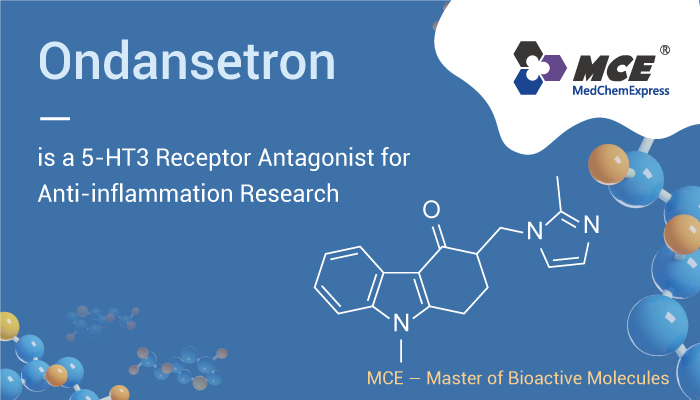5-HT receptors, 5-hydroxytryptamine receptors, or serotonin receptors, are a group of G protein-coupled receptor and ligand-gated ion channels found in the central and peripheral nervous systems. They mediate both excitatory and inhibitory neurotransmission. The 5-HT receptors are activated by the neurotransmitter serotonin, which acts as their natural ligand. Moreover, 5-HT receptors are found in almost all animals. The types of 5-HT receptors includes 5-HT1, 5-HT2, 5-HT3, 5-HT4, 5-HT5, 5-HT6, 5-HT7. The 5-HT receptors are the target of a variety of pharmaceutical drugs, including many antidepressants, antipsychotics, anorectics, antiemetics, gastroprokinetic agents, antimigraine agents, hallucinogens, and entactogens.

Ondansetron (also known as GR 38032 or SN 307) is a highly selective and orally active 5-HT3 receptor antagonist.
Ondansetron does not have a physiologically relevant binding affinity for α7 or α4β2 nicotinic acetylcholine receptors nor does it display direct agonist activity for nicotinic receptors. In addition, Ondansetron is a potent antiemetic that suppresses nausea and vomiting caused by chemotherapy and radiation therapy. Specifically, Ondansetron exerts antiemetic effects by antagonizing 5-HT receptor located on local neurons in the peripheral and central nervous system. Moreover, Ondansetron improves auditory gating deficits in schizophrenia drug-treated mice. Furthermore, Ondansetron exerts antiphlogistic and analgesic activities. Ondansetron inhibits lipopolysaccharide-stimulated secretion of TNF-α in a dose-dependently manner in human monocytes. Besides, a decrease in the 5-HT content gives rise to lower number of activated macrophages, the main proinflammatory cytokines source through their serotoninergic receptors. Moreover, preliminary data have shown that the intravenous injection of Ondansetron has an analgesic affect in neuropathic pain.
To sun up, Ondansetron is a selective and orally active 5-HT3 receptor antagonist with anti-phlogistic and analgesic activities.
References:
[1] Kristin M Wildeboer, et al. Brain Res. 2009 Dec 1:1300:41-50.
[2] Azadeh Motavallian-Naeini, et al. EXCLI J. 2012 Feb 22:11:30-44.